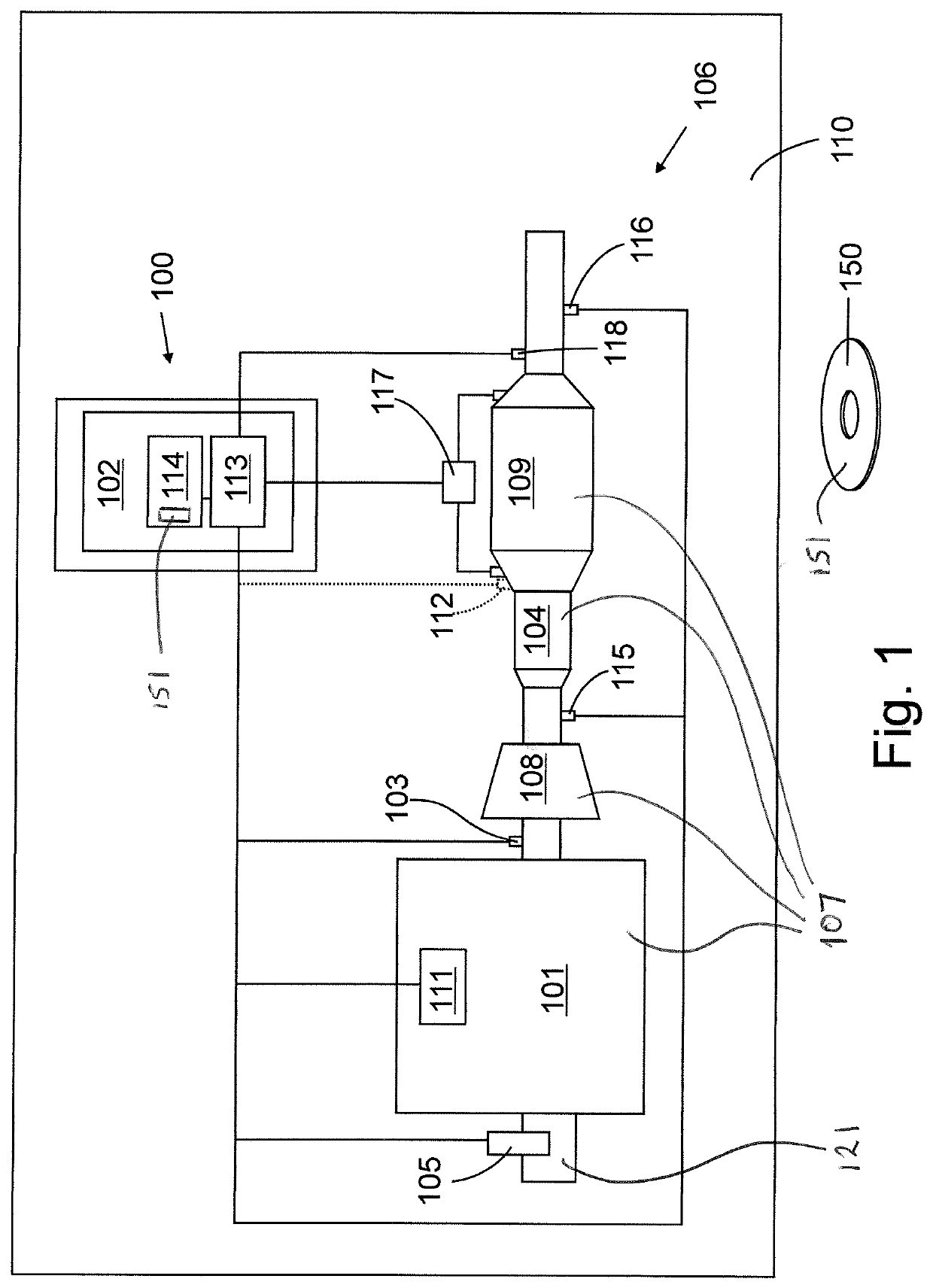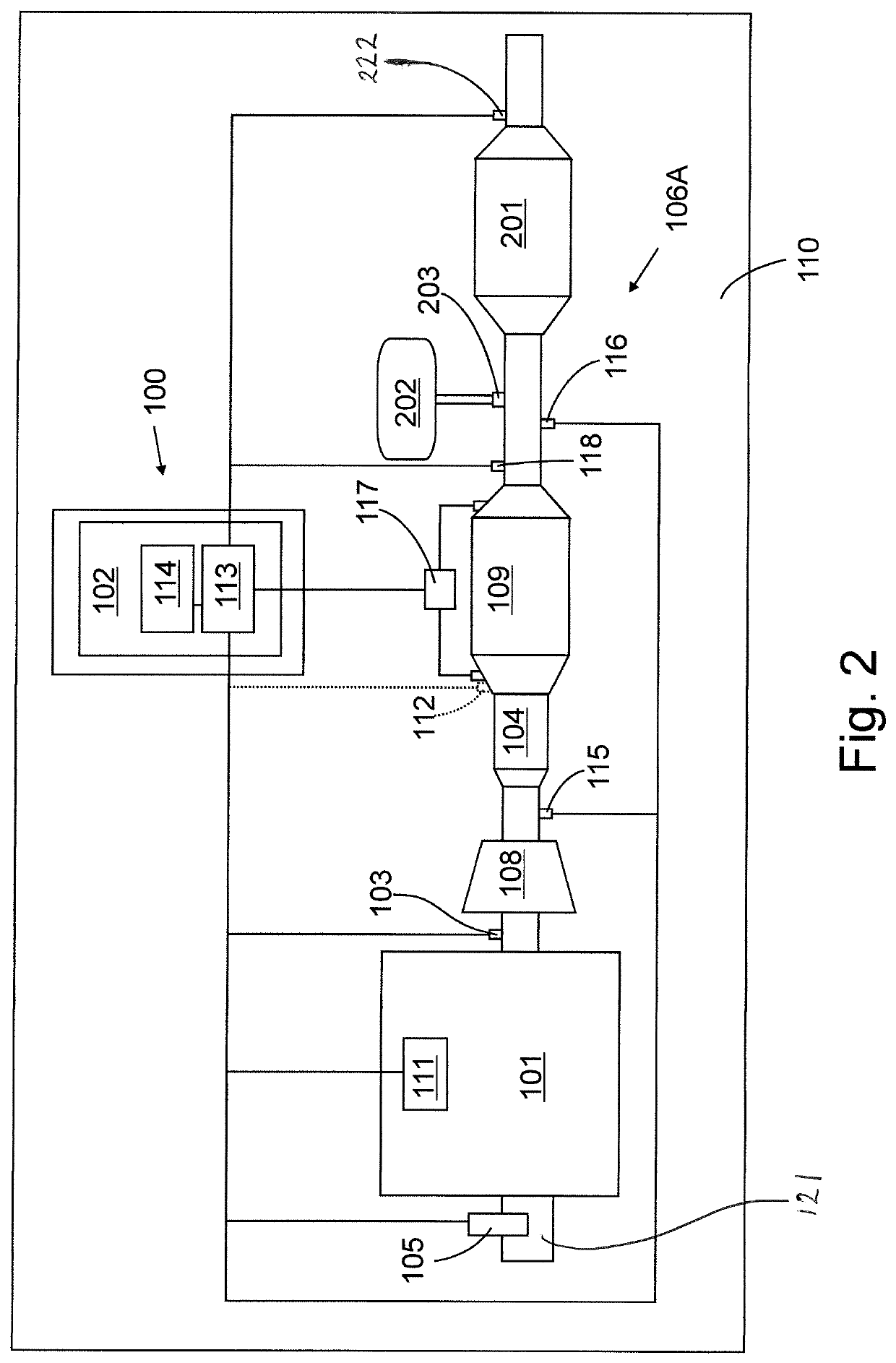Control of aftertreatment of an internal combustion engine
a technology of aftertreatment and internal combustion engine, which is applied in the direction of exhaust treatment, membrane filter, dispersed particle filtration, etc., can solve the problems of increasing the complexity of the aftertreatment system to meet the automotive emission legislation targets, the difficulty of packaging the temperature sensing means, and the large number of sensors required for thermal, so as to reduce the number of temperature sensor signals that must be analysed, the difficulty of reducing the number of temperature sensing means, and the effect of reducing the difficulty o
- Summary
- Abstract
- Description
- Claims
- Application Information
AI Technical Summary
Benefits of technology
Problems solved by technology
Method used
Image
Examples
Embodiment Construction
[0084]The Figures illustrate an apparatus 100 for controlling injection in an internal combustion engine 101, the apparatus 100 comprising a processing means 102 configured to: receive a first signal from a first temperature sensing means 103 indicative of a first temperature of exhaust gases outputted from an internal combustion engine 101 at a first location upstream of a first exhaust system component 104 configured to provide a passage for exhaust gases; receive a second signal from a flow rate sensing means 105 indicative of a flow rate of the exhaust gases outputted from an internal combustion engine; calculate an approximated value at least from the first signal and the second signal, the approximated value being indicative of a second temperature of exhaust gases at a location downstream of the first exhaust system component; and provide an output signal to control a rate of fuel injection, in dependence of the calculated approximated value.
[0085]The approximated value may b...
PUM
 Login to View More
Login to View More Abstract
Description
Claims
Application Information
 Login to View More
Login to View More - R&D
- Intellectual Property
- Life Sciences
- Materials
- Tech Scout
- Unparalleled Data Quality
- Higher Quality Content
- 60% Fewer Hallucinations
Browse by: Latest US Patents, China's latest patents, Technical Efficacy Thesaurus, Application Domain, Technology Topic, Popular Technical Reports.
© 2025 PatSnap. All rights reserved.Legal|Privacy policy|Modern Slavery Act Transparency Statement|Sitemap|About US| Contact US: help@patsnap.com



